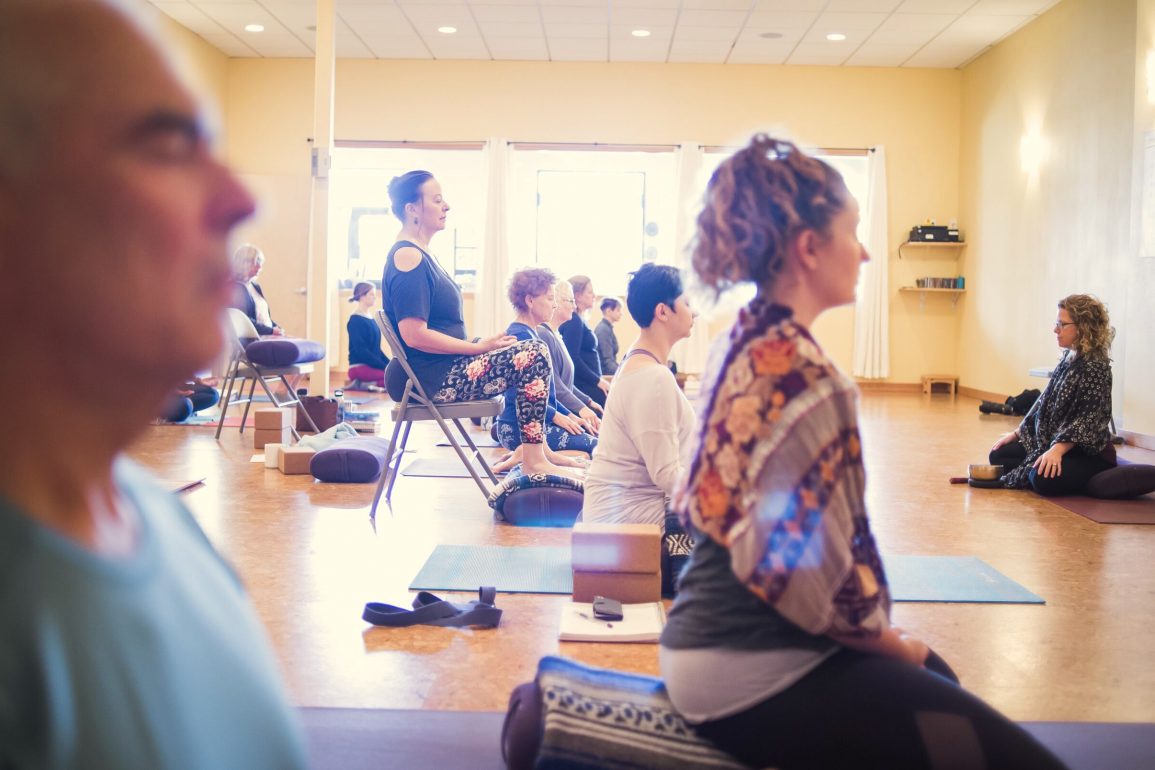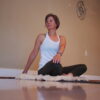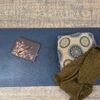I recently returned from a 5-day silent meditation retreat.
Before I go any farther, let me assure you that it is not like going on vacation. Yes, there are moments of deep rest. There is a sense that there is nothing to do. On retreat, we are able to step out of the daily tasks for a time.
That week on retreat, I found there were moments when all there was to do was lay on the grass and watch the clouds pass, before the ringing of the bell to summon us for our next meditation session. I experienced moments of deep stillness and quiet that come from days of not speaking, when the inner chatter finally stopped, for a moment, and all I could feel was the beating of my heart and movement of the trees around me.
But vacation, it is not. More often than not, you face the parts of yourself that are the most uncomfortable. Without the distraction of interaction, conversation, phone, computer, TV, radio, even reading or journaling, you see the parts of yourself that you would rather not like to see. The parts that you spend most of your waking hours in an unconscious attempt to hide.
A few days of silent meditation and there you are: face-to-face with the least-liked parts of yourself.
On retreat, I thought about a conversation that my parents had four years ago, when my mom was dying. The end was getting pretty close, and my dad said to her: “it’s ok to let go.” “I don’t know how,” she said. I was moved by this. We are all facing aging and deterioration of the body, and eventually death. In my mother’s most vulnerable moment, faced with the biggest letting-go of her lifetime, there was the fear of not knowing how.
It’s this fear that we don’t know how to let go that many of us hide. That we don’t know how to soften these hard edges of ourselves, that we don’t know how to let go of our anger, our resentment, our fear. As the Disney song goes (my 5-year-old daughter would sing it for you – loudly) “Let it Go!”—but that is easier said than done. So difficult, in fact, that even as she was dying, my mom was faced – and frightened by – that not knowing.
On day 3 of 15 hours a day of meditation (sitting-walking-eating-working meditation), that fear was in my face. I felt an incredible tension in my chest, my throat, my jaw, my mouth. As much as I kept trying to soften with the breath, kept trying to notice the tension, kept trying to “let go,” the worse it got.
And my commentary about it! My mind had lots to say about this tension. (Boy I need a massage; why don’t I take better care of myself and get bodywork every week; I’m a yoga teacher, I’m not supposed to be tense; clearly this tension means something about me; I’m such a control freak; I’ll never be able to let go…)
My teacher, a gentle and generous woman said this one evening: “You can’t force letting go. You can create the conditions for mindfulness and concentration to arise and insight and wisdom happen naturally.”
She invited us to say silently to ourselves, when we were facing difficult sensations or emotions in our meditation – “may I hold this too with compassion.”
For the rest of the retreat, this became my practice. Holding this fear, this tension, this not knowing how to let go – with compassion —holding all of it with a loving, kind, wise attention. In moments of meditation, when the tension would arise, and my fear with it, I would pause. Not feeling the need to fix or change it, and instead, inviting in a gentle holding of the tension and fear.
I can’t say the tension disappeared miraculously, but my attention toward it softened. Instead of resistance, a space emerged that allowed me to be just as I am. Tension and all.
This is the heart of what I want to offer through my teaching and through the space that is Source Yoga: A space for you to come as you are. You with the tension, the fear, the resistance, the places that we all hide and smooth over and don’t want people to see. You can come here to your mat, and actually just be with all of it—not just the pretty parts, the strong parts, the looking-good parts. All of it.
Come here and may you hold this too, with compassion.






